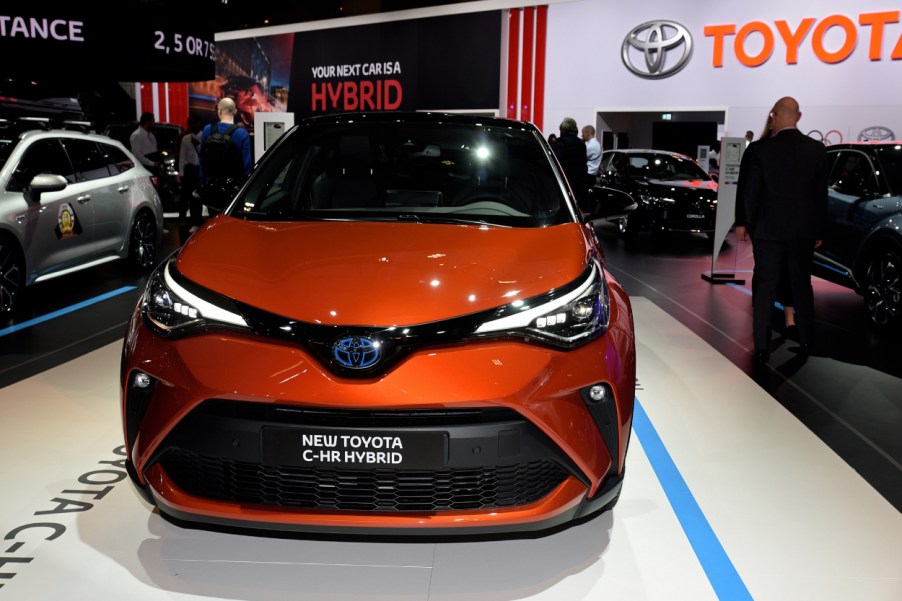
The New Toyota C-HR Really Shouldn’t Call Itself a Crossover
We’ve seen a lot of subcompact SUVs heading into dealerships across the country. The Toyota C-HR is one of them, but it doesn’t exactly scream crossover. In fact, there’s hardly anything about it that shows it can truly be in that segment.
AutoTrader reviewed the 2021 C-HR and found it lacking in quite a few different ways. Here’s what they had to say about Toyota’s subcompact crossover-like SUV.
Why the Toyota C-HR doesn’t fit the Crossover label

A crossover usually refers to an SUV that’s built on a car’s platform. But, in the case of the C-HR, the design falls short. With this SUV, the ground clearance seems unexceptional when you compare it with other crossovers in the subcompact segment.
It’s also sorely lacking in cargo space, which other crossovers did fairly well. What it has is pretty average, but you could essentially fold down the rear seats to gain a few cubic feet more storage space if you don’t actually need those seats, though.
But the most disappointing part of this so-called crossover is that it doesn’t come with the option for all-wheel drive. The lack of everything that makes an SUV a crossover just makes the C-HR a nicely designed hatchback that allows you to sit higher in the driver’s seat.
Where the C-HR goes wrong
Toyota had a good idea when it came up with its original plan, but the resulting design doesn’t match up. AutoTrader found quite a few things that didn’t meet their expectations.
Besides not having the ability to choose AWD, they didn’t like how limited the rearview vision was for both the driver and for any backseat passengers. The hatchback-like design made it quite difficult to see in certain lines of sight.
The other deal-breaker was the sluggish performance of this subcompact crossover. According to Car and Driver’s review, the four-cylinder that comes in this SUV could only muster up an 11-second acceleration time when going from 0 to 60 mph.
AutoTrader felt the lack of pep, and subpar continuously variable automatic transmission detracted from the fun this vehicle could offer with its smaller stature.
What’s to like about the Toyota C-HR?
While there were a lot of issues the reviewers had with the Toyota C-HR, there are still a few things they put on their list of likes. Overall, they felt it was fun to drive because of its size. It could fly through corners and turns with ease. You could maneuver around tight streets and parking lots with little trouble.
It comes with a nice list of standard features, one being accident avoidance technology, which surprised the reviewers. It also brings with it some impressive safety pieces as standard equipment. You’ll get a driver’s knee airbag along with the front passenger-side under the cushion airbag.
Interior materials are another area that the Toyota C-HR excelled in. The cabin holds above-average materials, which some of its rivals don’t. It also contains some nice decorative touches that make it look even more luxurious.
The most impressive aspect of this SUV is that it comes with the tried-and-true reliability that Toyota is known for. So, there are plenty of things to like, even though the C-HR fails in certain areas, like only having a front-wheel-drive model.
The Toyota C-HR is a fairly decent vehicle, but don’t expect much more than average quality with it. It might, however, be worth paying $22,000 to $27,000 if speed isn’t important to you or if you and one other passenger are the only ones using it.


